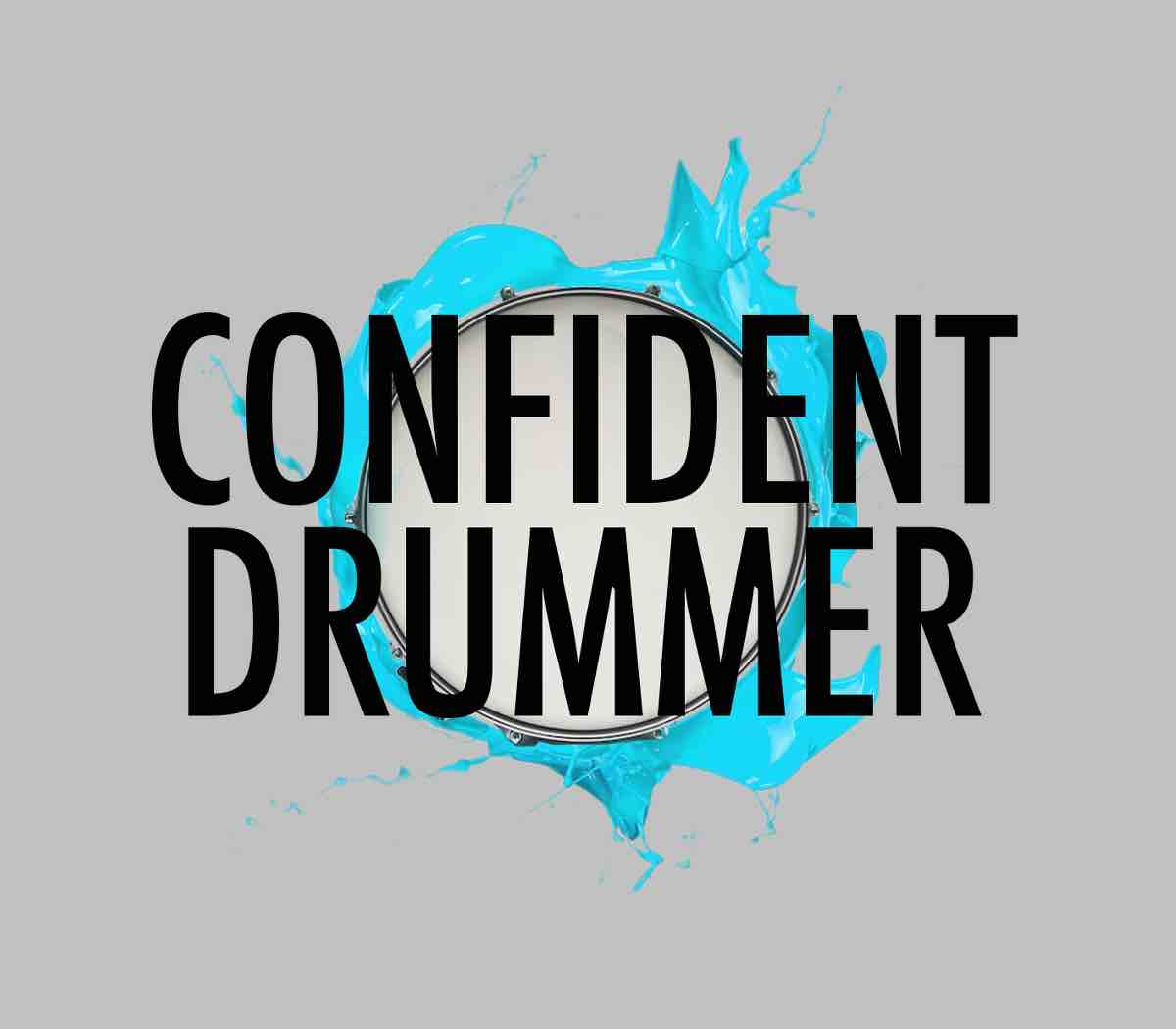As touched upon in ‘Recording Ourselves: the most Powerful Feedback Tool to Improve our Drumming‘, if our objective is to practice more effectively then it’s enough to use even just one microphone to record ourselves.
However, if our goal is to produce music, then we will probably want to expand the possibilities available by creating a real Home Studio.
It goes without saying that, if we are creative, a couple of good microphones and lots of ideas are all it takes to create a sound that can work.
Here, however, we want to go deeper into the topic, discussing the third, fourth and fifth link in the chain of sound: the room, the sound engineer and the hardware.
Of course each of these areas would require a whole book to be explored appropriately.
In this article I’m simply going to summarize my experience and explain the fundamentals for those who are just getting started and want to get off on the right foot.
Going back to the list of priorities shown in the related post ‘The Chain of Sound‘, based on the impact each element of the recording studio has on the sound, from the most important to the least we have:
- Our gear (discussed in the above mentioned article).
- The recording room.
- The sound engineer.
- The studio hardware.
Again, once we have taken care of our gear, it’s clear that there is no point in spending a fortune on a better piece of hardware if we don’t know how to make the most of it and if we haven’t done proper acoustic treatment of the room in which we record.

ROOM:
Let’s start with the room. The reason why it comes right after the gear is that, since the Drum Set is an acoustic instrument, the room is part of the instrument.
Much of the drum sound is indeed a product of the space we are in. If we have ever played a Snare Drum outdoors we know how different its sound is from what it produces in a small room.
The reason is that outside we only hear the direct sound of the instrument, while indoors we also have the reflected sound, which is generated by the room and yet, when listening, we perceive as an integral part of the sound of the drum.
The elements that influence the room sound are:
- The size. The size of the room determines the amount of natural reverb. Although it’s desirable to have large spaces with an abundance of this element, the drums are recorded almost entirely with close microphones and with only a handful of ambient mics which are then mixed with the others.
As a consequence natural reverb is not that crucial. What matters is that it produces a pleasant sound, and that there is at least a little of it, to avoid having to rely exclusively on artificial reverb. - The shape and proportions. Rooms with perfectly geometric proportions tend to trigger unwanted resonances, especially when one or more dimensions are multiples of the others (for example 2 meters by 4, with a height of 2 meters). Rooms with different heights, depths and widths work better.
- The materials objects and surfaces are made of. First of all, it’s best to avoid completely empty rooms, because of the excess of reflected sounds. The type of surfaces of walls and objects then influence the sound by either absorbing it, reflecting it, or diffusing it. Exactly what the acoustic treatments we’ll look at in a moment are meant to affect.
With its unique combination of size, proportions and materials, the room functions as both a natural reverb and an equalizer. Being an instrument it also has its own timbre, which can be darker or brighter based on the frequencies it reflects and absorbs.
For these reasons it’s treated in such a way as to produce a beautiful sound right at the source, based on our preferences.
The room in which we play can undergo both soundproofing and acoustic treatment.
While acoustic insulation has the purpose of allowing us to work without annoying anyone with the loud sounds we produce, as well as preventing external noise from leaking into the microphones, acoustic treatment is the component that determines the sound response of the room:
- Hard, smooth surfaces like walls and mirrors reflect sound.
- Soft, porous surfaces such as acoustic foam panels absorb sound.
- Scattered surfaces such as wooden diffusers disperse sound.
Acoustic treatment does not necessarily require the use of professional materials and panels.
Furniture, curtains and carpets, if positioned wisely, will absorb and diffuse reflections just as effectively.
For example, in my studio instead of professional sound diffusers I put a few large bookshelves behind the drums: thanks to the different shapes and depths books do the job pretty well.
Another important aspect is the placement of the drums in the room, which deeply affects their sound.
If we have our own recording room we can experiment until we find the solution that satisfies us the most.
An initial assessment can be achieved by going around the room clapping our hands or carrying a Snare Drum to hear where we get the sound we like best.
A good room is ultimately the room that helps us produce the record we have in mind. It’s an environment with a sound and a vibe that inspire our creativity and make us feel good when we play.
Therefore it’s also a good idea to take care of its lighting, temperature and humidity.
Ideally we should have a control room, separate from the recording room, acoustically treated as well and set up to accommodate computers, hardware and monitors.
If not feasible we can do without it, resorting to headphone monitors and setting everything up in the recording room, possibly next to the drums so as to operate everything comfortably.
ENGINEER:
The sound engineer has a very important role. If we happen to work with competent people we will learn something new every day and have fantastic sounds in each session.
In a Home Studio we usually take on this role as well, and in a future post we will go through a crash course to learn how to choose and place microphones, use compressors and equalizers, and mix.
HARDWARE:
Moving on to hardware, there has never been a better time for recording and producing.
Today we can record with the smartphone we have in our pocket at a quality that until just a decade ago required specialized and much more expensive equipment.
Therefore there is no reason why we shouldn’t set up our own personal studio in the space where we practice.
We can do it over time, one step at the time: since we are dealing with separate units, we can start with a few elements and then replace, expand or update things, until we reach a level that satisfies us.
One more premise: let’s make it a priority to research and carefully select the right gear, rather than blindly buy the most cutting-edge and top-notch equipment.
As seen, hardware is at the bottom of the list of what contributes to the most beautiful and professional sound.
It’s way more important to learn how to make the most of what we have. Just as with regard to drums, with hardware too it’s mostly the skill of the person using the instrument that determines the end result.
The essential hardware components in a Home Studio are:
- Microphones.
- Preamplifiers.
- Analog to digital and digital to analog converters.
- Sound processors such as compressors, equalizers and gates.
- Effects like reverbs and delays.
- Audio interfaces.
- Listening monitors.
- Mixer.
- Cables and stands.
- Computer.
- DAW.
Each of these elements is part of what we could consider the hardware subchain, a concept whose workings and importance we understand quite well at this point.
It may seem like a long and daunting list. In reality, to get started we can take advantage of streamlined and affordable solutions such as most modern audio interfaces, which integrate many of the main components in a single device.
Even in its basic version, the audio interface is the central element of any Home Studio, as it works as a point of interaction between microphones and computers.
Then, among the countless alternatives on the market, we can find products that also function as preamplifiers, converters and everything else we may need.
These solutions are created precisely with the Home Studio in mind, given its growing popularity: if the average musician had to choose, purchase separately and then make preamplifiers, converters, compressors, equalizers and effects work together, the task would become overwhelming.
Luckily for us, recording studio hardware manufacturers have thought of this scenario, so all we have to do is purchase an interface that includes everything we need:
- Ideally 8 preamplifiers, to accommodate Bass Drum, Snare, three Toms, Hi-Hat and two overhead mics.
- A/D and D/A converters.
- Native audio processing plugins (alternatively we can use those included in the DAW).
- Compatible ports to connect it to our Pc.
The choice on the market is huge, so it’s important to make sure that what we are about to buy meets the above requirements.
Prices too vary enormously: we can get started with literally a few hundred euros/dollars, and then upgrade as soon as we have accumulated a little experience and have a clearer idea about specific features that work for us.
The wiring is simple. The mic cables go into the interface, and from the interface we connect to the computer via USB or Thunderbolt ports.
Moving on to microphones, they are devices that transform a sound wave into an electrical signal. There are two main types:
- Dynamic microphones. They work using the same dynamic principle as in a loudspeaker, only reversed.
The sound waves move a diaphragm attached to a small coil, which, being close to a magnet, produces an electrical signal that is then amplified by the preamps. They don’t require a power supply.
They produce a warm sound but are less accurate than condenser mics, and also slower in reacting to a waveform because of the larger size of their diaphragm. They sound great on drums. - Condenser microphones. The diaphragm in this case is a movable plate of a condenser, whose other plate is fixed. Audio vibrations produce changes in the distance between the plates, generating an electrical signal.
The microphone electronics require a power source, which is provided through the preamps and called phantom power.
They are a little more edgy than dynamic mics, but faster, very precise, sensitive and detailed. They are mainly used on cymbals and also as overhead and ambient mics.
A good starting point for our Home Studio:
- One dynamic microphone for Bass Drum, Snare Drum and each Tom.
- One condenser microphone for the Hi-Hat.
- Two overhead condenser mics.
We can buy individual microphones or take advantage of the many drum microphone bundles, which are an excellent starting point and if we stick to top brands sound great too.
Once we have captured the signal we need to send it to the preamplifiers, which take care of turning the tiny microphone signal into usable sound.
In our case, as explained, we will use those integrated in the audio interface, plugging mic cables directly into it.
Just for reference let’s keep in mind that, even if an audio interface can contains 8 or even 16 preamps, and the whole thing costs a few hundred euros, a single top-notch preamplifier can cost up to thousands of euros.
A preamplifier, in addition to amplifying the signal, also has the function of ‘coloring’ it based on the technical characteristics of the specific device.
Lastly, the interface will take care of converting the sound, perhaps processing/effecting it and then sending it to the DAW, to be processed and mixed.
Listening monitors can be speakers or headphones. In a Home Studio, the use of headphones alone is allowed, to make up for the frequent lack of a dedicated control room. These offer quality and versatility for much lower costs than speakers.
We don’t need to buy a new computer and a mixer. The former is already part of everyone’s infrastructure, and a common Pc is powerful enough to handle a bunch of audio channels.
The latter is an integral part of any DAW, in a digital version of course.
As far as cables and mic stands are concerned, let’s keep in mind that since they are subject to mechanical wear it’s better not to try to save too much on them.
In summary, to set up our Home Studio we can start with:
- An acoustically treated room (even in a rudimentary way).
- 8 microphones.
- An 8 channel audio interface with built-in preamplifiers and converters, which is compatible with our Pc ports.
- Microphone stands and cables.
- DAW software that includes audio processing plugins (if these are not part of the audio interface).
To further explore the subject I recommend the amazing free guides by eHomeRecordingStudio.
Related resources:
‘In Session – How To Sound Great On Records‘
The Chain of Sound – The Key to Recording Beautiful Drum Tracks
The Complete Studio Drummer Toolbox



















